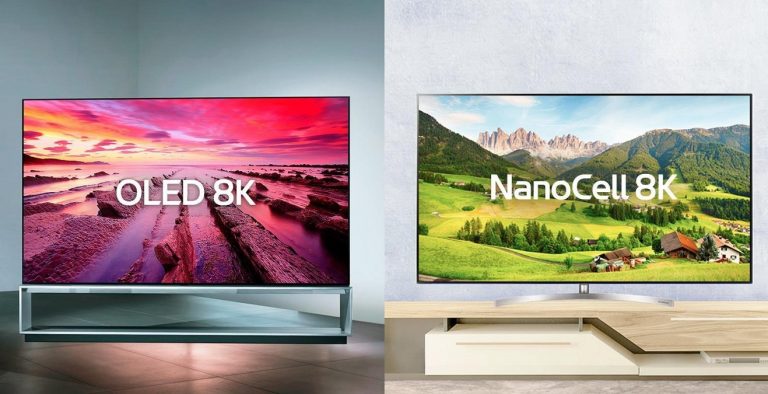
If you are on the market looking for a new TV, you have probably stumble across strange words like “NanoCell”, “OLED” and “QLED.” NanoCell and OLED are model series from LG while QLED is from Samsung. With all these keywords, you may be wondering what the differences are and which one you should go for.
LG NanoCell
LG NanoCell is one of the new technologies in the TV segment and promises a different TV experience. This technology uses extremely tiny particles (Nano particles) to absorb any unwanted light wavelengths to deliver pure colours on the TV screen.
As the NanoCell filter out the unwanted wavelengths, you are left with superior picture output with pure reds that are not hinged with yellow and orange colours. This guarantees that you do not get any fading colours that may end up causing instability.
These colours are not distorted even when you view the screen from the side. No matter where you seat, you are going to have a good experience and this may be an attractive feature if you have a big family where people fight for the seat Infront of the TV.
QLED Technology
QLED stands for Quantum Dot LED Technology and was introduced by Samsung. The technology is not that new as it is similar to the standard LED technology we have had for years. It does work as other LED panels by relying on a backlit LED panel with a few adjustments.
For the tech aspects, QLED is made up of tiny particles called quantum dots that are used to super-charge the brightness and color displayed on the screen. Quantum dots emit their own differently coloured light when hit by light from the LED backlight.
Even with all the quantum dots, the technology behind these TVs is still similar to regular LED TVs. The TV uses the LEDs that produce light that travels to the screen’s surface.
OLED Technology
OLED stands for Organic LED Technology and is the tech we see on most premium TVs from LG. Unlike QLED, it does not rely on any backlight and with that it is able to create deep blacks and this aids in producing high-quality contrast. For blacks on QLED, the backlight has to be dimmed and what remains is blocked to achieve darker scenes.
On OLED TVs, each pixel produces its own light which is not the case with QLED. Since OLED technology requires no backlight, it can be used on the thinnest TVs out there and is also the perfect option for curved TVs.
Overall, OLED TVs tend to offer deeper blacks and contrast should be better compared to QLED TVs.
Final Verdict
With the different technologies, it may be hard to choose one that suits you. If you want those deep blacks and are not willing to compromise on that, OLED is the way to go. NanoCell promises improved picture quality and colour accuracy. This may be the perfect technology for introducing true 8K TVs as it delivers the perfect picture quality. NanoCell uses nano particles unlike QLED which uses colour sheets over LCD. The nano particles filter out unwanted shades for the best picture quality.
Also Read: How LG Electronics Is Enhancing Minimalist Living With New Products

